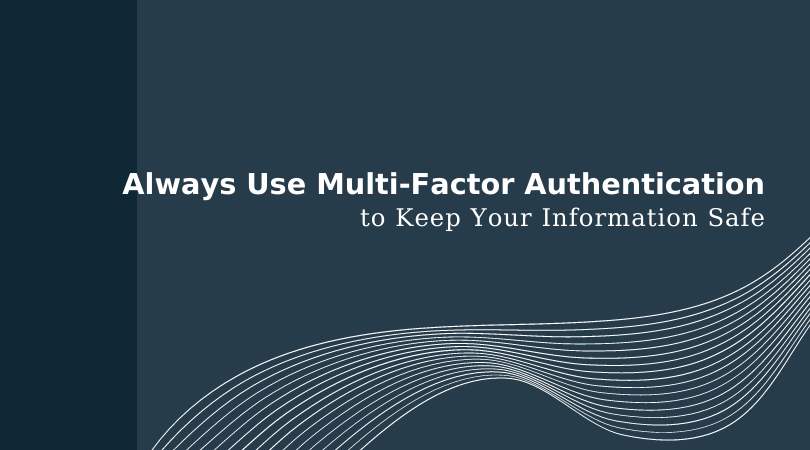Whether for personal or business use, multi-factor authentication is best practice across the board.
Cyber-criminals are getting smarter and more advanced by the day. Cyber-criminals most commonly gain access to enterprise networks by stealing or guessing usernames and passwords of employees.
We recommend that all of our clients begin requiring use of multi-factor authentication as soon as possible, if you don’t already. In order for multi-factor authentication to be successful, it’s important to require all of your employees, as well as anyone with access to your network, to initiate use of multi-factor authentication. A single gap in the system allows cyber-criminals the entrance point they need. Proper use of MFA can go a long way in preventing compromised passwords within your organization.
Let’s look more closely at what multi-factor authentication means and why it is beneficial to all organizations, regardless of size and industry.
What is multi-factor authentication?
Multi-factor authentication is when a user must provide two or more pieces of evidence to verify their identity in order to gain access to a network or digital resource. Multi-factor authentication (MFA) is most commonly used to protect against cyber-criminals gaining access to secure accounts by verifying the identity of the user. MFA is also known as two factor authentication.
Typically, MFA will provide your employees with software that requires them to confirm their identity before they can login to the requested account or network. Types of multi-factor authentication include: email token authentication, SMS token authentication, hardware token authentication, phone authentication, software token authentication, social login, security questions and biometric verification.
When should multi-factor authentication be used?
In general, use MFA whenever possible. On its most basic level, MFA is an additional layer of security for whatever system or network you’re trying to protect. Use MFA especially when you’re protecting your sensitive data–for example, primary email, health records, financial accounts, etc. While some organizations require you to use MFA, many offer it as an extra option that you can enable—but you must take the initiative to turn it on.
How does MFA protect your organization? Two key ways:
- Extra level of security. If cybercriminals obtain a specific username and password, if MFA is in place, the cybercriminal would still have to break through the additional layer of authentication (or multiple layers) in order to access the account.
- If MFA initiates due to a malicious login attempt, it will lock the account and trigger an alert to your IT security team. This will work to prevent the attempted cybercriminal attack. Early detection is a key to prevention when it comes to cybersecurity, and MFA operates as a powerful first line of defense.
If you have questions about the use of multi-factor authentication, Clarity Technology Group can help. Get in touch with us here.
